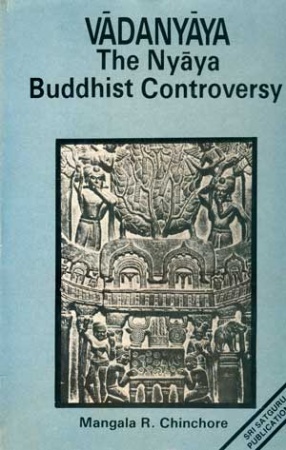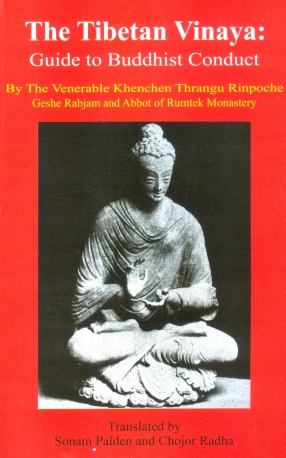
Bibliotheca Indo-Buddhica Series

Showing all 12 books








The Abhisamayalankara is one of the five works upon which the Yogacara school of later Buddhism is founded, and whose authorship is according to the Tibetan tradition, ascribed to Bodhisattava Maitreya, the future Buddha. The book is divided into 8 Chapters. The first three deal with three kinds of Omniscience, the Omniscience of the Mahayanistic Buddha (sarva-akara-jnata), the Omniscience of the Bodhisattva concerning the Path (maarga-jnata) and that kind of ...

As a distinguished scholar and prolific writer he was, Acarya Dipanakarasrijnana, known well as Atisa, Atisa or Atisa, needs no introduction to any person interested in Buddhistic studies in general and in tibetology in particular. The enormous contribution of the Acarya, restoring and rejuvenating the Dharma in Tibet after the cataclysm enthusted upon by the iconoclast Landar-ma, brought a renaissance there in all the fields. Atisa composed numerous treatise ...

The present work attempts to critically evaluate the Nyaya- Buddhist controversy regarding the nature and status of Nigra-hasthanas with special reference to Dharmakirti’s Vadanyaya. The standpoints of pre-Dharmakirti Nyaya philosophers concerning Nigrahasthanas is explicated and articulating Dharmakirti’s line of thinking concerning them, his criticism of Nyaya Nigrahas-thanas is given in details. Post-Dharmakirti Nyaya ...

Tathagatagarbha-Buddha Nature-is a central concept of Mahayana Buddhism crucial to all the living practice traditions of Tibetan and Zen Buddhism. Its relationship to the concept of emptiness has been a subject of controversy for seven hundred years. Dr. Hookham's work investigates the divergent interpretations of these concepts and the ways the Tibetan tradition is resolving them.
In particular she does this with reference to the only surviving Indian commentary ...


Carter unfolds the cumulative traditions of Theravada Buddhism by showing how one "looks at the world through Buddhist eyes." Presenting evidence from the Buddhist heritage in Sri Lanka, he develops a disciplined, inclusive approach to understanding notions of ethical living and "faith", or how individuals live life religiously. The author examines Buddhism as a worldview, reviewing the process of its origins and the development of ...

Traditionally, the Buddhist teachings are divided into three major division: the Sutras, the Vinaya, and the Abhidharma. The Vinaya are the discourses of the Buddha on the conduct of the monks and nuns and also lay persons.
The Buddha taught the vinaya to monks and nuns so that they had a set of rules allowing them to devote their complete energy to reaching enlightenment. The Buddha, however, did not simply one day give these rules. Rather he waited for the ...

The Saddharma-pundarika is one of the nine Dharmas which are known by the titles of - 1. Ashtasahasrika Pra-gnaparamita; 2. Ganda-vyuha; 3. Dasabhumisvara; 4. Samadhi-raga; 5. Lankavatara; 6. Saddharma-pundarika; 7. Tathagata-guhyaka; 8. Lalita-vistara; 9. Suvarna-prabhasa. These nine works, to which divine worship is offered, embrace (to use the words of the first investigator of Nepalese Buddhism) in the first, an abstract of the philosophy of Buddhism; ...
